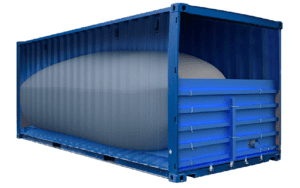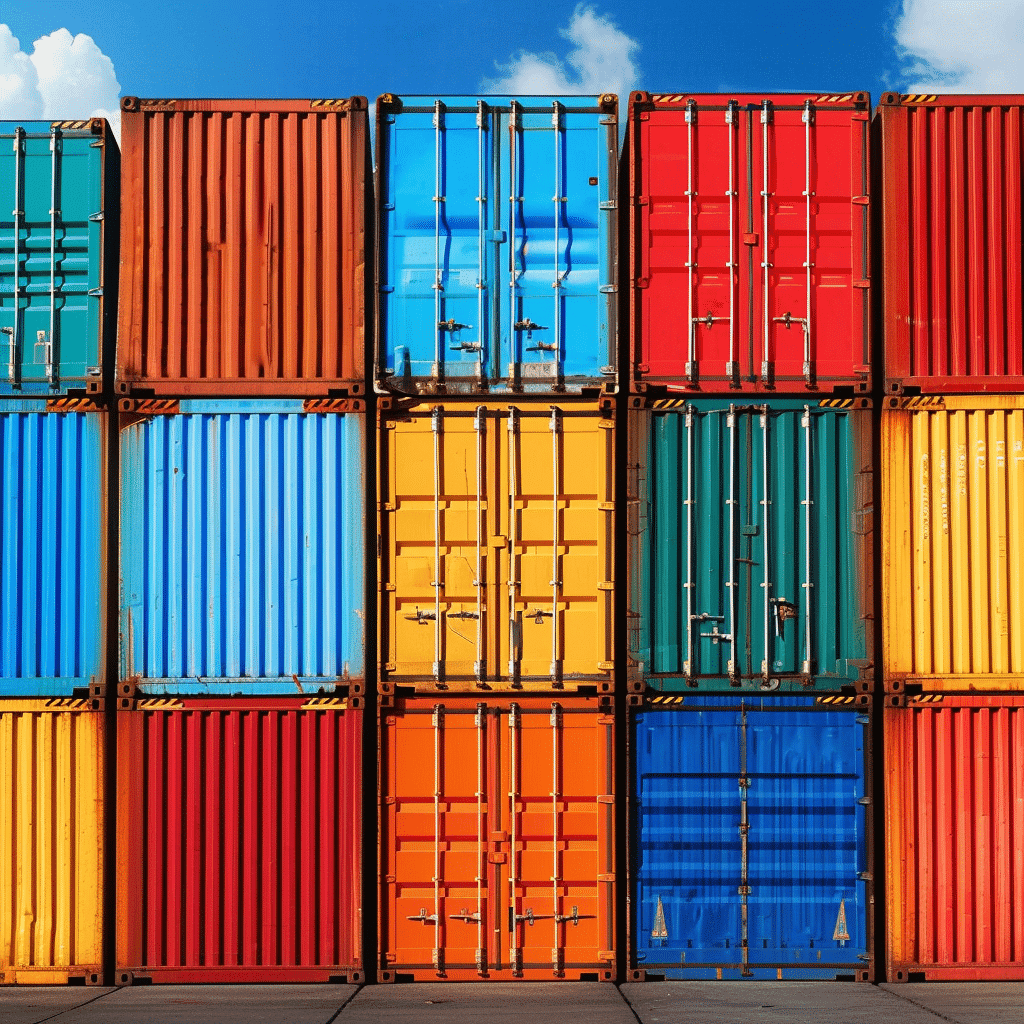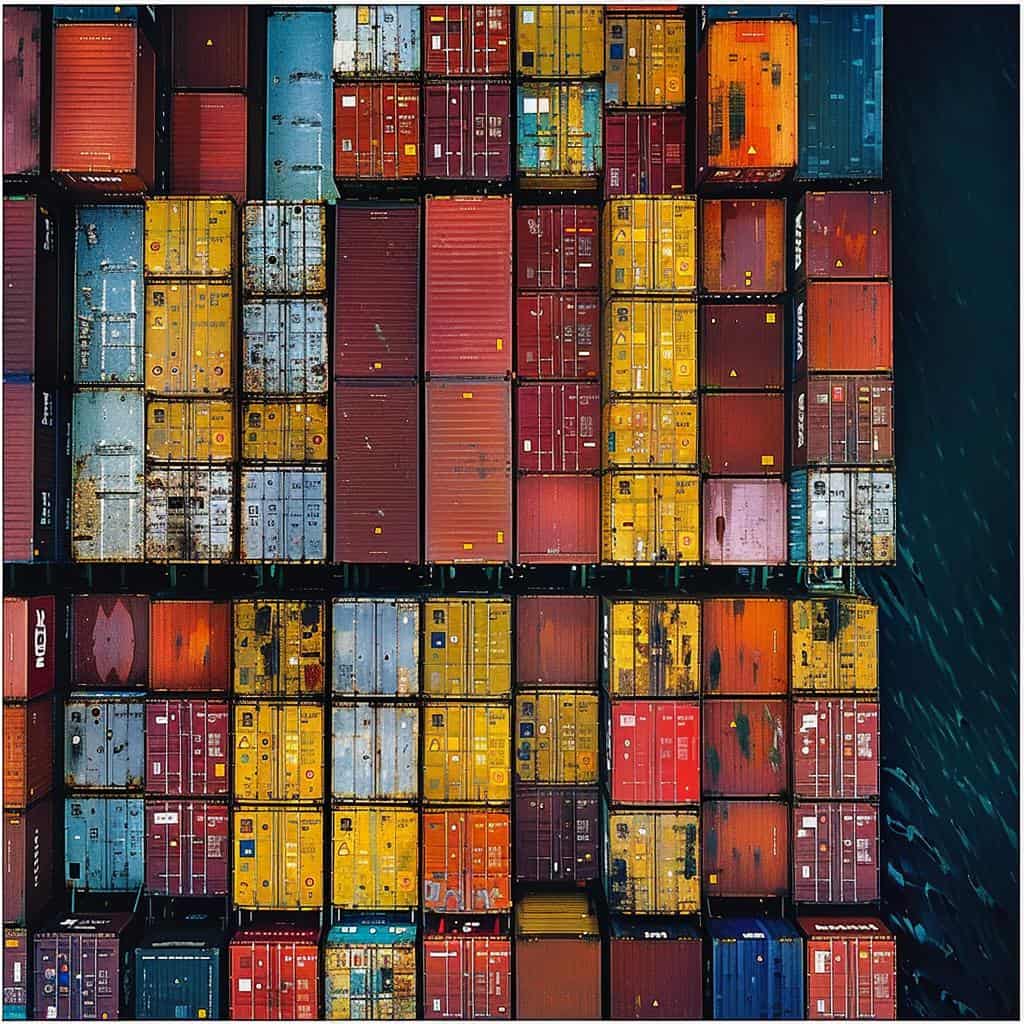In the dynamic realm of global shipping, achieving efficiency and cost-effectiveness in cargo transportation is a complex challenge. This article explores critical issues that impact the shipping industry worldwide, focusing on the distribution and management of shipping containers.
We will delve into the root causes of these logistical challenges, their implications for shippers, and the innovative solutions being employed to address them. From the utilization of flexitanks to strategic container management, our discussion will provide valuable insights into how businesses and logistics professionals can optimize their operations, ensuring a more stable and reliable supply chain.
Join us as we navigate through the complexities of shipping container management and uncover strategies to maintain equilibrium in the ever-evolving world of shipping.
Design and Structure
To understand the design and structure of flexitanks, you need to consider their key features and how they contribute to the efficient transportation of bulk liquids.
A flexitank is a large, collapsible bag that’s used to transport liquid cargo in a standard-sized container, known as a tank container. These flexitanks are specifically designed to hold and transport a wide range of bulk liquids, including non-hazardous liquids. They’re made from a strong, yet flexible material that can withstand the pressure of the liquid inside the cargo while ensuring its safe transportation.
The design of flexitanks allows them to fit snugly inside a tank container, maximizing the use of available space and preventing the cargo from shifting during transit. This ensures that bulk liquids can be transported in a cost-effective and efficient manner.
Materials Used in Construction
Considering the design and structure of flexitanks, it’s important to explore the materials used in their construction.
Flexitanks are specifically designed to transport bulk liquids, and their construction materials play a crucial role in ensuring the safe and efficient transportation of these liquids.
Flexitanks are typically made from a strong and durable plastic material, such as high-density polyethylene (HDPE) or polypropylene (PP).
These materials are chosen for their ability to withstand the pressure and weight of the liquid cargo while also providing a barrier against any potential leaks or contamination.
Unlike traditional intermediate bulk containers or ISO tanks, which are rigid and bulky, flexitanks are made from flexible bags that can be easily folded and transported when empty, making them more cost-effective and efficient for shipping purposes.
Capacity and Dimensions

When determining the capacity and dimensions of a flexitank, it’s important to take into account the specific needs and requirements of the bulk liquid being transported. A flexitank is a flexible, multilayered bag that’s placed inside a general freight container to transport liquids.
The capacity of one container in a flexitank can range from 16,000 to 24,000 liters, depending on the size of the container. The dimensions of a flexitank are designed to fit snugly inside the container, maximizing the use of space and preventing any movement during transportation.
It’s crucial to consider the weight and viscosity of the liquid, as well as any temperature requirements, to ensure that the flexitank is designed and installed correctly. By carefully considering the capacity and dimensions of the flexitank, you can ensure the safe and efficient transportation of your liquid cargo.
Types of Flexitanks
You can choose from various types of flexitanks to meet your specific liquid transportation needs. Flexitanks are a popular solution for preventing container imbalance and maximizing the use of container space. There are three main types of flexitanks available: single-layer flexitanks, multi-layer flexitanks, and reefer flexitanks.
Single-layer flexitanks are the most common type and are suitable for non-hazardous liquids. They provide a cost-effective solution and are easy to install and remove.
Multi-layer flexitanks, on the other hand, offer an additional layer multiple layers of protection for sensitive or high-value liquids. They provide an extra level of security against leaks or punctures, reducing the risk of contamination or damage during transport.
Reefer flexitanks are specifically designed for temperature-controlled liquid cargo. They incorporate insulation and heating elements to maintain the desired temperature throughout the journey.
Choosing the right type of flexitank depends on the specific requirements of your liquid cargo. By selecting the appropriate flexitank, you can prevent container imbalance and ensure the safe and most cost efficient, transportation of your liquids.
Applications of Flexitanks
To continue the discussion on flexitanks, let’s explore the various applications in which they can be utilized for liquid transportation.
Flexitank containers are an excellent solution for transporting liquids in bulk. Flexitanks offer a flexible and cost-effective alternative to traditional shipping methods.
They’re commonly used for the transportation of food-grade liquids, such as edible oils, fruit juices,, and wines. Additionally, flexitanks are suitable for the shipment of non-hazardous chemicals and industrial liquids. They provide a reliable and secure method of transportation, minimizing the risk of leakage or contamination.
Flexitanks also offer the advantage of easy installation and removal, making loading and unloading efficient. Furthermore, flexitanks can be used for temporary liquid storage, providing a flexible and convenient solution for businesses.
Types of Liquids Suitable for Transport
Flexitanks are capable of transporting a wide variety of liquids, making them a versatile option for businesses looking to transport bulk liquid shipments. They’re suitable for transporting edible oils, food grade liquids, industrial oils, non hazardous liquid cargo, and non hazardous chemicals.
Flexitanks are specially designed to ensure the safe transportation of these liquids, providing a secure and leak-proof container. Edible oils, such as vegetable oils and cooking oils, can be transported using flexitanks, ensuring their quality and freshness. Food grade liquids, including juices and syrups, can also be safely transported in flexitanks.
Industrial oils, such as lubricants and hydraulic fluids, are commonly transported using these flexible tank containers too. Additionally, flexitanks are suitable for carrying non hazardous liquid cargo, such as water and non hazardous chemicals, making them a versatile solution for various industries.
Advantages Over Traditional Containers
One major advantage of using flexitanks over traditional containers is their ability to accommodate a wider range of liquid cargo. Flexitanks are large, flexible containers that can hold up to 24,000 liters of liquid, making them highly versatile in transporting various types of liquids such as food-grade products, chemicals, and even non-hazardous materials.
Unlike traditional containers, flexitanks eliminate the issue of container imbalance by evenly distributing the weight of the cargo, thus preventing any potential damage to the container or the cargo itself during transportation. This advantage not only ensures the safety of the cargo but also reduces the risk of container imbalance, which can lead to delays and additional costs.
Environmental Impact
The use of flexitanks in the transportation of bulk liquids also presents notable environmental benefits. A key aspect is their recyclability; most flexitanks are manufactured from materials that can be recycled, thereby reducing the environmental footprint associated with their disposal. Compared to traditional shipping methods, flexitanks significantly reduce packaging waste.
They eliminate the need for multiple smaller containers, leading to less packaging material used and discarded. Additionally, many flexitanks are constructed using eco-friendly materials, which further minimizes their environmental impact.
These materials are often chosen for their durability and ability to safely contain various liquids without risk of contamination or leakage, while also being more sustainable. Overall, the adoption of flexitanks aligns with growing environmental consciousness in the shipping industry, offering a more eco-friendly solution for bulk liquid transportation.
Operational Process
To ensure a smooth operational process, it’s important to consider the proper handling and securing of flexitanks during transportation.
Flexitanks are versatile containers that can be used for shipping a wide range of liquids. However, if not handled correctly, they can contribute to container imbalance, which can lead to safety hazards and logistical challenges.
When loading and unloading flexitanks, it’s crucial to follow proper procedures to ensure their stability and prevent any leakage or damage. This includes securely fastening the flexitanks within the container, using appropriate restraints and supports.
Additionally, it’s important to carefully monitor the weight distribution of the flexitanks during shipping to avoid any imbalance that could affect the stability of the container.
Filling and Sealing Methods
When filling and sealing the container, use proper methods to maintain balance and prevent potential issues.
To avoid container imbalance, it’s crucial to carefully consider the type of flexitank used. Ensure that the flexitank is suitable for the specific cargo being transported and meets all safety standards.
When filling the container, it’s important to distribute the weight evenly to prevent any imbalance. This can be achieved by filling the container symmetrically and placing heavier items at the bottom.
Additionally, proper sealing methods should be employed to ensure the cargo remains secure during transportation. Make sure all openings are tightly sealed to prevent any leakage or shifting of the cargo.
Unloading Procedures
To unload the container safely and efficiently, follow proper procedures and guidelines.
When unloading a container that contains a flexitank filled with liquid latex, a rubber-like material, it’s important to take extra precautions due to the potential for container imbalance. Flexitanks are hermetically sealed and can exert pressure on the walls of the container, causing it to tilt or tip over during unloading.
To prevent this, make sure the container is properly secured and stabilized before opening the doors. Use appropriate equipment such as forklifts or cranes to handle and remove the flexitank from the container.
When handling the flexitank, be careful not to puncture or damage it, as this can lead to leakage and spills.
Safety and Quality Assurance
Ensure the safety and quality of container operations by implementing thorough inspection procedures.
When using a flexitank, it’s crucial to check for any damage or leaks before loading it onto the container. Flexitanks are flexible bags designed to hold non-hazardous liquids and are composed of numerous layers to provide strength and protection.
Additionally, ensure that the flexitank is positioned carefully inside the container to prevent any shifting during transportation.
Anti-suction ball valves should also be inspected to ensure they’re functioning correctly. These valves prevent the formation of a vacuum inside the flexitank, which can lead to bulging and potential damage.
Limitations
Despite the numerous advantages of flexitanks in transporting bulk liquids, it’s important to acknowledge their limitations and challenges. One significant limitation is their suitability for certain types of liquids. Flexitanks are ideal for non-hazardous liquids but may not be appropriate for hazardous or highly reactive chemicals.
Additionally, temperature sensitivity is a concern; while some flexitanks are designed for temperature-controlled shipments, extreme temperatures can still pose risks to the integrity of the container and the quality of the cargo.
Transportation restrictions also play a role, as not all shipping methods or routes are equipped to handle the unique requirements of flexitanks. Understanding these challenges is crucial for shippers to make informed decisions and mitigate potential risks associated with using flexitanks for liquid transportation.
Frequently Asked Questions
What are flexitanks used for?
Flexitanks are used to convert standard dry shipping containers into bulk liquid transport vessels, offering a cost-effective solution for shipping liquids globally.
What is the difference between ISO tank and Flexitank?
ISO tanks can transport both hazardous and non-hazardous liquids and do not require additional packaging, while flexitanks are used only for non-hazardous liquids and need to be stored in a standard shipping container when the iso containers are full.
Is Flexitank the same as Flexibag?
Flexitank and Flexibag are often used interchangeably to describe the same product, a large, flexible bag or container used for shipping liquids.
Are Flexi tanks reusable?
Most flexitanks are designed for single-use and are made from 100% recyclable materials, although some can contain liquid for years or be reused.
Conclusion
Ensuring the safe and efficient transportation of goods in the shipping industry hinges on the use of well-designed and properly constructed flexitanks. By carefully considering factors such as materials, capacity, and dimensions, and adhering to appropriate unloading procedures, the overall stability and reliability of cargo transport can be greatly enhanced.
Additionally, implementing rigorous safety and quality assurance measures is crucial to maintain the integrity of the flexitanks, thereby safeguarding the cargo and optimizing logistical operations.



